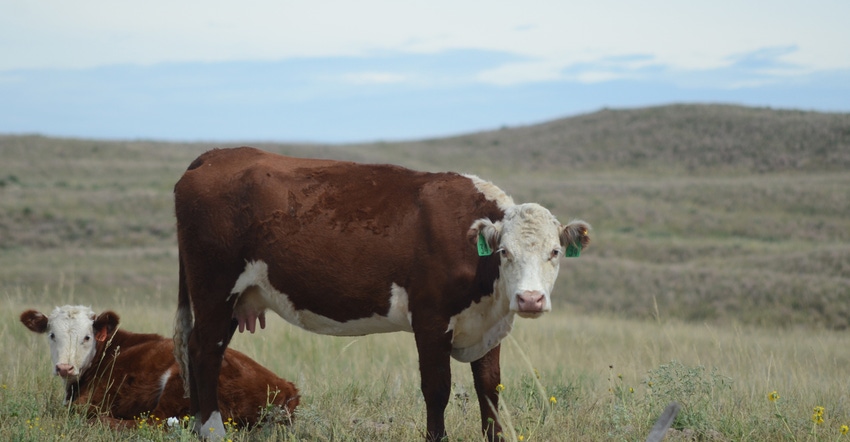February 20, 2020

By Mary Drewnoski, Halden Clark and Haley Linder
Colostrum is the "first milk" produced after calving. It has a different composition than milk as it has an important role in being the first meal a calf receives. Colostrum is more nutrient-dense than milk and contains antibodies essential for calf health.
During pregnancy, certain molecules important to immune system defense called antibodies are not passed from dam to calf. When calves are born, they have inactive immune systems, and therefore, they need protection against potential diseases until their own immune systems mature.
Colostrum provides just that, as it contains antibodies called immunoglobins. Immunoglobins have important roles in the immune system recognizing and destroying pathogens. Bovine colostrum contains three types of immunoglobin — A, G and M.
Immunoglobin G (IgG) is more than 85% of the total immunoglobin concentration in colostrum. However, the calf's gut can only absorb IgG in the first 24 hours of life. The earlier calves receive colostrum, the better, as the gut's absorptive ability slowly decreases over those first 24 hours.
Consumption within the first four to six hours is best. Failure to receive an adequate amount of IgG results in failure of passive transfer of immunity. Calves with failure of passive transfer are more likely to get sick.
Why it matters
Research at U.S. Meat Animal Research Center in Clay Center, Neb., found calves with inadequate blood serum IgG concentrations 24 hours postpartum were more likely to experience preweaning sickness or death.
In fact, calves with inadequate IgG concentrations had a 5.4 times greater risk of death during the preweaning period than calves that had adequate IgG concentrations. Additionally, failure of passive transfer can affect cattle performance. Sickness during the first 28 days of life was associated with a 35-pound-lower expected weaning weight.
Healthy newborn calves typically consume enough colostrum for passive transfer of immunity. Still, there may be cases in which producers should hand-feed colostrum to ensure the calf receives this important first meal.
If the calf appears to be too weak to stand or experienced a difficult birth, this may affect their ability to suckle. Additionally, if the calf has been abandoned or the dam refused to let the calf suckle, colostrum should be hand-fed.
Replacer vs. supplement
Feeding colostrum from the dam is the best option, followed by another cow in the herd. If collecting colostrum is not an option, it's important to understand the difference between colostrum replacer and a colostrum supplement.
A colostrum replacer will contain more than 100 grams of IgG per dose, as well as protein, fat, vitamins and minerals needed in the calf's first meal. It is meant to fully replace colostrum. On the other hand, colostrum supplements are meant to supplement low-quality colostrum. They usually have 40 to 60 IgG per dose and do not contain those additional nutrients.
There is a price difference between the two, but only colostrum replacer can completely replace maternal colostrum. Calves should receive 5% of their body weight in colostrum, typically two quarts. Producers should aim to feed colostrum within four to six hours of birth, as this is when the calf's gut can absorb the most IgG.
Before hand-feeding colostrum, warm up a wet or cold calf first. While one may think that feeding a warm meal may help raise body temperature, the calf's gut is not as motile if they are cold. This can negatively affect how they absorb the nutrients and immunoglobins in colostrum.
Colostrum is crucial to getting calves off to a great start in life. Receiving this first meal within the first four to six hours can help keep calves healthy before their immune systems mature. Consult with your herd veterinarian for further information about your calves' health.
Drewnoski is a Nebraska Extension beef systems specialist; Clark is a University of Nebraska-Lincoln assistant professor of practice and health stewardship veterinarian; and Linder is a M.S. student at UNL.
Source: UNL BeefWatch, which is solely responsible for the information provided and is wholly owned by the source. Informa Business Media and all its subsidiaries are not responsible for any of the content contained in this information asset.
You May Also Like




